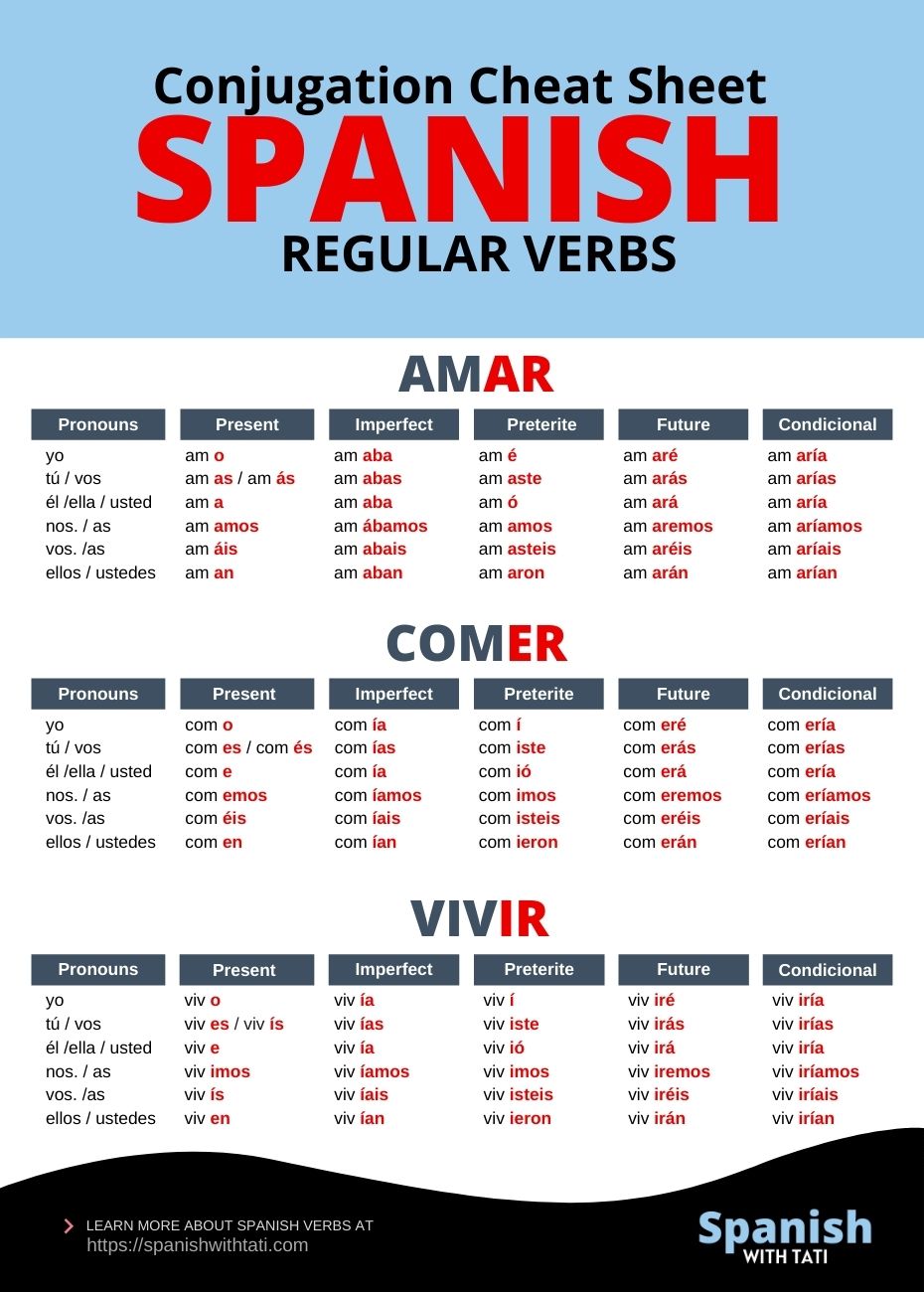
Each verb ends in either -ar, -er, or -ir. What do we mean by the verb’s ending? Unlike English, which adds a “to” before any verb to turn it into its dictionary form, Spanish infinitive forms are defined by how the verb ends (the verb’s last two letters). The conjugation pattern to be used for each tense will depend on the type of verb you’re using (its ending in the infinitive) and the subject of the sentence (the pronoun). 1.1 Key Things to Know Before You Start Conjugatingīefore we get ahead of ourselves, there are two basic things you need to learn before diving into Spanish conjugation: → For a more extensive overview of all Spanish tenses, visit our Spanish Verbs Guide. By learning these first, you’ll get familiarized with the structures and patterns used to conjugate verbs in Spanish-more importantly, you’ll be able to start communicating! From then on, learning everything else will be easier. So how do you know which Spanish tenses to learn first?Īs a beginner, you only need to worry about mastering the three basic tenses: simple present, past, and future. A great example of this is the Spanish conditional, a form that’s used to talk about things that might happen if another thing happens or a certain condition is met. There are also several variations of these tenses and modes, which allow you to express verbs in a greater variety of contexts. There are also three modes (sometimes called ‘moods’) in which these tenses can be conjugated: Present Simple Tense: El Presente Simple.Ready to take a huge step forward in your Spanish learning with SpanishPod101? Table of Contents Once you have these down, we recommend that you continue your studies by learning all of the other complex tenses and irregular verbs. Because it’s our goal to make the process as painless as possible for you, we’ll cover only the most important tenses in Spanish: simple past, present, and future.Īfter mastering these tenses, you’ll be able to start building more complex sentences and engaging in conversations.

We want to help you out on your mission to become an expert in Spanish verb tenses. It’s all about learning patterns and practice, practice, practice. Nevertheless, there are numerous tricks and rules to make it all a lot easier. Spanish is a complex language, and yes, there are numerous tenses to master. It might feel like a very long journey to embark on. Spanish conjugation rules are quite different from those of English, and it might seem to you that there are too many Spanish tenses and endless exceptions. One of the most daunting things when learning a new language, especially if that language is Spanish, is trying to master the verb tenses and conjugations.


 0 kommentar(er)
0 kommentar(er)
